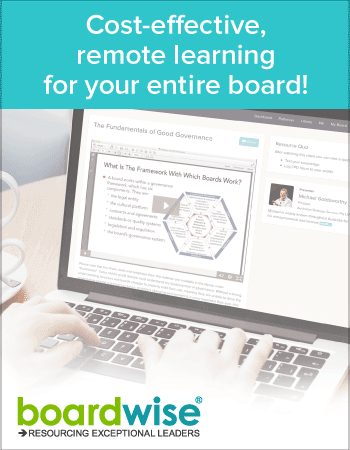Crafting Well-Organised Board Packs
-
boardpacks
Board Packs Crafting Well-Organised Board Packs
A well-organised board pack, also known as a board book, makes it easier for time-pressed directors to navigate and absorb crucial information. But how should you organise your board pack so it is effective and fit for purpose?
With crowded agendas and limited time, directors depend on well-organised board packs to prepare and actively participate. Thoughtful organisation, formatting, and presentation makes a substantial difference in how board members absorb and utilise key information.
Follow these best practices to create board packs that facilitate engaged directors:
Structure Contents Logically
Organise the pack chronologically based on the flow of the agenda topics. Number all sections, pages, and documents for easy citation and reference during meetings. Work hard to ensure you and your team use a consistent sequence across all packs:
- Agenda
- Past Meeting Minutes & Action Items
- Committee Reports
- CEO Update
- Financial Reports
- Performance Metrics
- Strategic Plans
- Policies for Review
- Proposals for Discussion
- Resolutions for Vote
- Background Materials
- Any Other Business
Whether you use the above or another structure, the key is using a standardised board pack structure consistently as it aids directors’ orientation and efficiency across successive meetings.
Highlight Critical Information
Don’t overwhelm directors with lengthy documents and extraneous data. Emphasise key points through executive summaries, charts, graphs, and bulleted lists.
Use highlighting, bolding, and underlining to direct attention to critical figures, trends, issues, and recommendations.
Provide links to source documents for more context if needed. Synthesise content to focus on information directors need to make informed decisions.
Number and Index Lengthy Documents
Any longer pack items like market analyses, research reports, or benchmarking studies should have page numbers and a table of contents with section indexing.
Include executive summaries of all lengthy documents.
Proper numbering and signposting aids navigation through detailed materials.
Format for Quick Visual Scans
Use concise paragraphs, bullet points, and bolding to optimise visual clarity and readability. Additionally:
- Avoid dense blocks of text.
- Leave ample white space between items to ease eyestrain.
- Ensure all charts and graphs have descriptive headings and data labels.
Information should be readily scannable and key points identifiable at a glance.
Clarify Acronyms
The first instance of any acronyms should be spelled out, with the abbreviation following in parentheses. Provide a glossary defining acronyms and key terminology used throughout the pack. This quick reference helps directors recall meanings when they are pressed for time or the meeting is fast paced.
Check Formatting Consistency
Ensure all fonts, sizes, colours, and design elements align. Formatting should be consistent across all documents and sections. Use legible fonts like Arial or Calibri.
These small details and extra polish promotes a professional impression.
Review Navigation and Flow
Rigorously review the finalised pack to confirm structure reflects a logical agenda sequence and directors can readily access required information. Check all digital links and bookmarks work correctly. Test rendering and navigation on laptops, tablets, and mobile devices as needed. A coherent flow and seamless access aids director preparation.
Solicit Feedback
Check in with directors periodically to gather input on pack contents, length, formatting, and overall ease of use. Incorporate feedback into future packs to maximise their utility over time. As needs evolve, consistently adapt board packs to support board requirements.
Leverage A Board Portal
Digital tools, but particularly board portals streamline creation and distribution of board packs. Upload packs as searchable PDFs or Microsoft Office documents for easy navigation. Hyperlink agenda items directly to relevant documents and sections. Cloud-based portals enable remote access from any device. Well-designed portals simplify pack assembly and enhance user experience.
Key Takeaway
While assembling comprehensive yet concise board packs requires forethought and care, the benefits are substantial.
Logically structured and visually intuitive materials enable directors to fully prepare for productive participation.
Well-constructed board packs assist with engaged oversight and good governance.
Make board packs a priority, continually refine based on feedback, and enable your board’s success through information access excellence.
Additional Resources
Company Secretary Playbook: Effective Board Meetings
Company Secretary Playbook: The Art of Reviewing and Refining Board Papers
Streamlining the Work of the Board
How to Structure Your Board Packs
Frequently Asked Questions
What is a board book?
A board book is another term for a board pack or board package. It refers to the complete set of documents and information compiled and provided to board directors in advance of a board meeting.
The 'book' contains the agenda, previous meeting minutes, financial statements, management reports, committee updates, background materials for decision items, and all other relevant information board members need to prepare for the upcoming meeting.
Typically the board book is distributed 7-14 days prior in either print or digital format. Print books may be spiral bound with tabbed dividers between sections. The digital version is usually a searchable PDF or set of files accessible via a secure online portal.
In essence, the board book serves as the playbook that brings directors up to speed on key developments and priorities to be discussed at the next meeting. Like a textbook for a class, it enables directors to do their homework ahead of time so they can actively participate in the boardroom.
A well-organised, complete, and easy to navigate board book is considered a governance best practice. It leads to more informed and engaged oversight by the board of directors.



